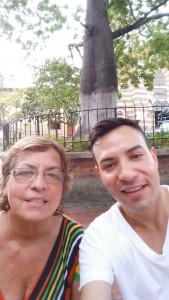After reading this week’s last chapter, I got the feeling that there is a bit of anxiety when it comes to predicting the future of an entire region, especially one so volatile like Latin America. If we know something about current international politics, and specifically of the United States, is that this powerful nation does not hold the same dominance over other regions like it used to do. Currently, other nations such as China have allied internationally with most Latin American nations to create new bilateral commercial agreements which could solve the necessity of having to negotiate deals with only one partner. The reading also talks about how ready Latin American elites were against the economic meltdowns that shocked the developed north, such it was the economic downturn of 2008. Such preparations were based on the willing of these elites and more importantly of daily citizens, to understand that power could come from their own willing to act. By being politically vocal, protesting in public and by revolting, many Latin Americans were able to change the face and outlook of their nations. Another big reason why Latin America was ready to withstand economic hardship, when other countries were not, was that Latin America has placed itself as a commodity export region which in turn allowed it to enjoy an economic boom.
Many Latin American countries incorporated into their national politics, foreign govern policies in hopes of achieving better economic prosperity. In the early 1970’s, many Latin American right-wind countries wanted to stablish the ‘Washington Consensus’, an economic model promoted by the IMF and the Wold Bank, for the privatization, deregulation, and opening of local markets to foreign investors. By 1973, almost all countries in Latin America had drifted to the right given that most of their commodity prices (coffee, maize, potato, etc.) had fallen and interest rates gone up. Latin America during the 1990’s had a political and economic period called: the ‘lost decade’, where inflation was so high (1000 %) and unemployment rates were greater than 40%. It was at this moment that many rich people, including the elites in Latin America, ‘exited’ their respective nations in order to save their financial future. But what happened to poor people who could not leave that and had to face reality at home? ‘Campesinos’ (peasants), poor people everywhere, and particularly indigenous people, were unable to farm or work in their normal habitats and were obliged to ‘exit’ the countryside and move into the slams of the big cities. There they sold their labour as a means of earning wages. In countries such as Colombia and Peru, where armed conflict was at its most intensive pick, many of these peasants had to settle in very inhuman communal conditions.
We also have other political models in Latin America fomented by presidents such as Hugo Chavez (Venezuela), Morales (Bolivia), and the Kirchners (Argentina), who became really good political allies and formed what is called the ‘pink wave’. Chavez with is capacity to petro- help their fellow friends, while undermining and attacking his enemies, could only be sustained for a while within the political arena of the country. When people saw that his policies did not help them directly, they started to lose patience. I think all this is just a political game that some presidents in Latin America play in order to accumulate and perpetuate their power. However, people are not stupid and one way or another they are going to seek to remove those political figures that do not render the economic, political, and social benefits that promise a more egalitarian society where a more fair state listens to what they have to say.
